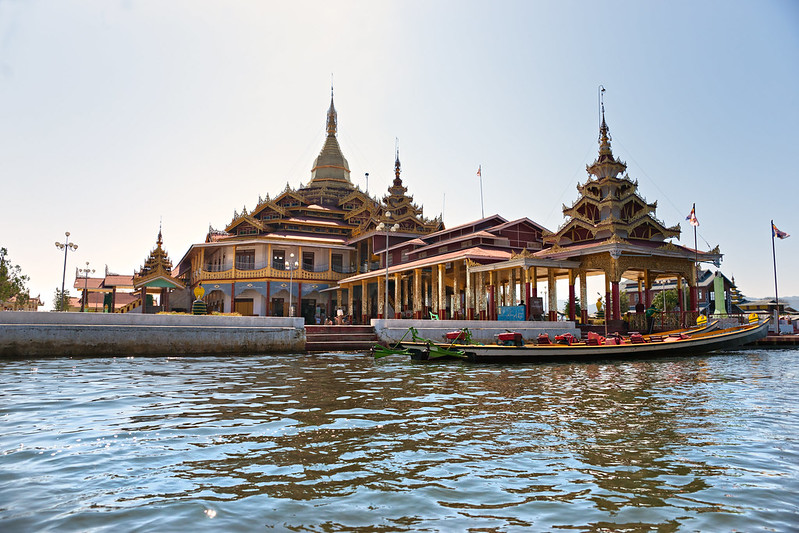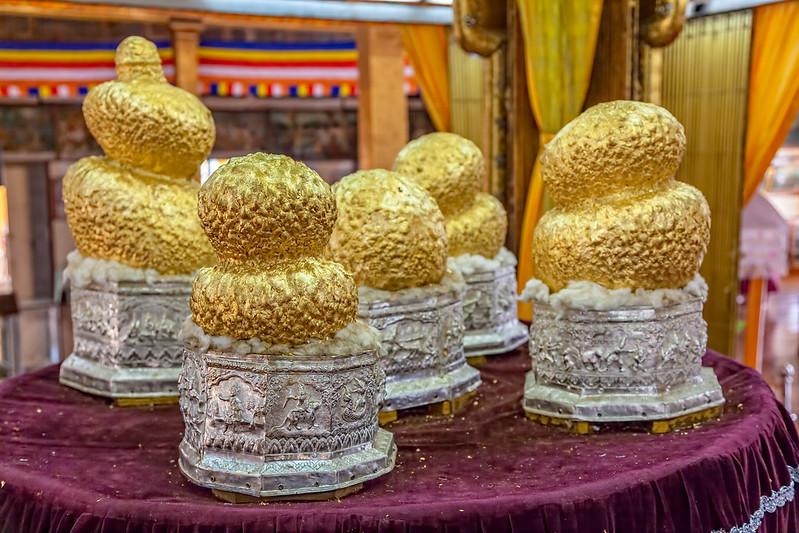The Inle Lake (The Floating Tomatoes)
(Copyrighted Content by Aung Myo Myint – Not for Re-use)

Early morning is the best time to glide through the waters of Lake Inle in a wood longboat. There are children on their way to school, families heading to the market laden with tomatoes and women starting to wash clothes from their stilt homes on the water. Lake Inle is a unique community with 23 villages and a distinct culture and a fascinating way to spend a day in Myanmar.
Fishing on the Lake

One of the best known features of Lake Inle are the fishermen who row with one leg. They operate a basket like net which traps fish by stunning them. Somehow the men know where the good catches are likely to be and wait for the right moment to pounce. These fish are stored live in tanks underneath the stilt houses as there is no refrigeration here. This was a skill passed down through generations and small children in the boats watched and learned the trade. Many people come to watch the fishermen on Inle Lake but there is far more to see here and lots of different ways of making a living that are intriguing to an outsider.
The lake had more surprises as the boat glided towards a green space near some houses and the distinctive smell of ripe tomatoes and onions filled the air. These were the famous floating gardens, formed from a bed of water hyacinth roots and chicken manure, and topped off with silt from the lake. Over a third of Lake Inle was covered in this way and boats drifted between the beds to prune and pick the produce. This area of Myanmar is known as the best producer of salad items in the country.
Silk and Rubies
The stilt houses on Lake Inle were fascinating to float by with waving children laughing from the porches and old men staring from a window space. The buildings held entire industries too from blacksmithing over open fires to silk weaving on antiquated looms. Lotus silk, which can only be sourced during the monsoon season, was woven into delicate scarves and the colours were like a rainbow. Cheroot making was another business here and in another stilt house were basket makers. The silversmithing and jewellery businesses were very interesting with intricate designs and good quality products. The acacia trees I had seen earlier had their use here as the nuts were used to polish silver. There were Burmese rubies set in silver and many other gems. Burma has only just started using credit cards and so having cash dollars on hand is essential when visiting Inle Lake as it is hard not to be tempted into buying.
Each morning there is a market somewhere on Lake Inle and a visit is a wonderful way of seeing the food sales, trading and even picking up a few bargains. The bright orange turbans of the hill tribe women who walk three hours each way to trade could be seen everywhere as they bargained for fish in exchange for vegetables. Huge pans of rice sizzled in the morning heat and smells of spices and cooking filled the air. Everywhere I went I was offered samples to taste.
A Whole Community

There are temples on Lake Inle too and one of the most famous is the Jumping Cat Monastery, renowned for its feline creatures that jump through hoops. It is known locally for the more interesting collection of ancient Buddhas which are of immense historical significance. The views across the floating gardens were just beautiful.
The restaurants on the lake are perfect for local specialties and at one named Smiling Moon the local tilapia fish had been boned and stuffed with herbs, onion, garlic and the flesh itself. It really was the most delicious fish I have eaten and extremely fresh.
On Lake Inle there are communities living a unique lifestyle and who are welcoming to visitors. It was a real privilege to be able to float by their homes and to encounter this way of living on water and in such a simple and distinctive way.

Comments
Post a Comment